How to grow Runner Beans
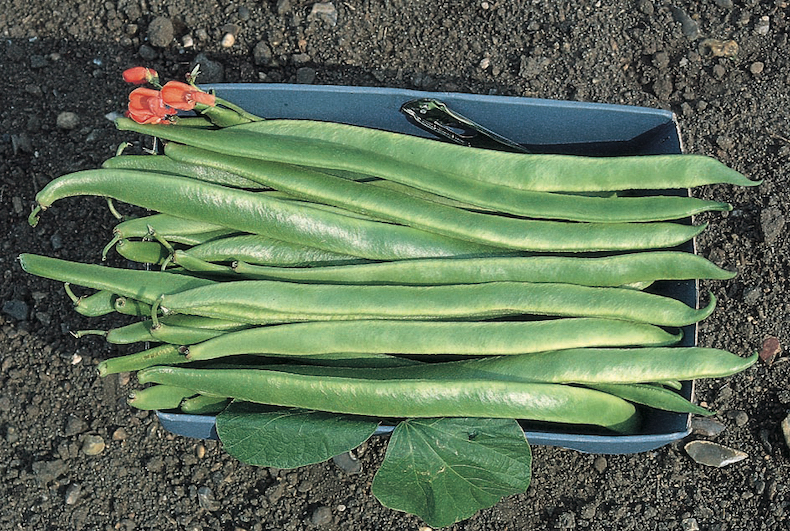
There's nothing better than freshly harvested runner beans
Image: Runner Bean 'Polestar' from Thompson & Morgan
For many gardeners, the summer just isn't complete without a delicious harvest of tender runner beans. They’re such a productive crop and, because they germinate and grow quickly, runner bean seeds are a wonderful vegetable to sow with children. Here’s all the information you need to grow runner beans at home, at the allotment or even in containers on a balcony!
Where to grow runner beans
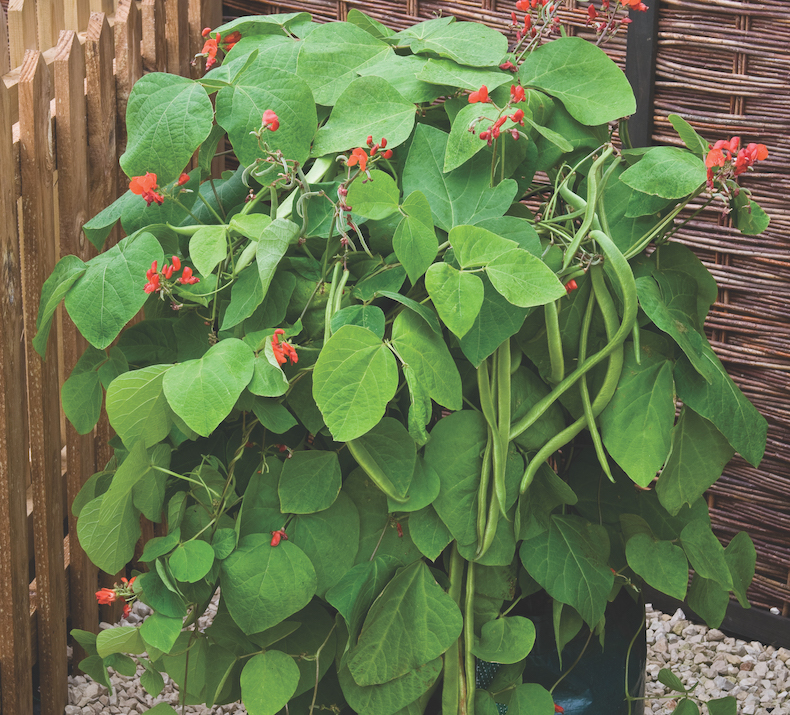
Runner beans thrive in containers and grow bags
Image: Runner Bean 'Firestorm' from Thompson & Morgan
Don't be put off if your plot is tiny. Because they’re climbers, runner beans are the perfect space-saving crop and grow equally vigorously whether you plant them into the ground or into large patio pots. In fact, with their ornamental, heart-shaped leaves and pretty, nectar-rich blooms, they even look perfectly at home in a flower border.
Grow runner beans in a sunny or semi-shaded spot with shelter from strong winds. Though they’re happy in any fertile, well-drained soil, it's a good idea to prepare the site for your beans a little while in advance, digging some compost or well-rotted manure into the soil during the spring and leaving it to stand for a few weeks. If you fertilise the ground immediately before planting, you’ll encourage lots of foliage to grow at the expense of beans.
How to sow runner beans indoors
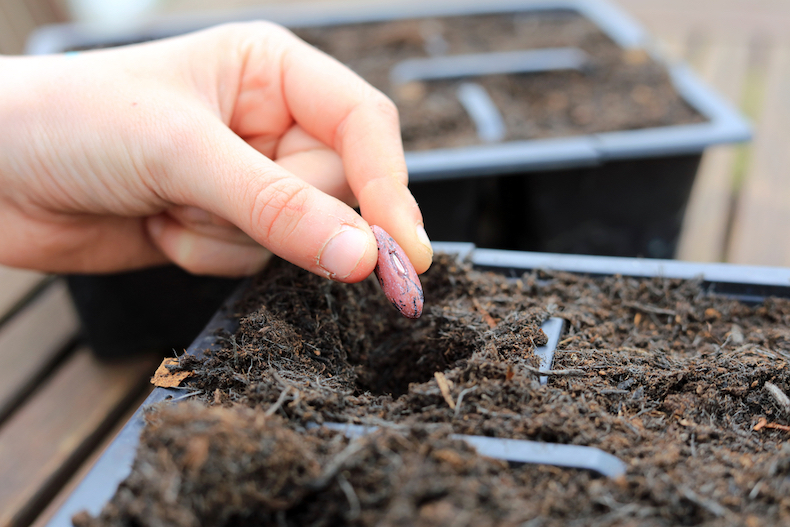
Start your runner beans off indoors in April, but don't plant outside until the end of May
Image: Dean Clarke/Shutterstock
If you prefer to start your runner beans off indoors, sow the seeds in April. Just fill a small pot with seed compost and make a hole of about 5cm (2") deep. Drop in a runner bean seed before backfilling the hole with compost and watering it in. The seeds germinate in about a week and grow surprisingly quickly.
You’ll need to harden your plants off for 7 to 10 days before transplanting them outdoors. Before planting out, check your bean plants are fully rooted into their pots, and do keep a close eye on the weather to ensure that all risk of frost has passed. In most parts of the UK, this will be from around the end of May.
How to direct sow runner beans outdoors
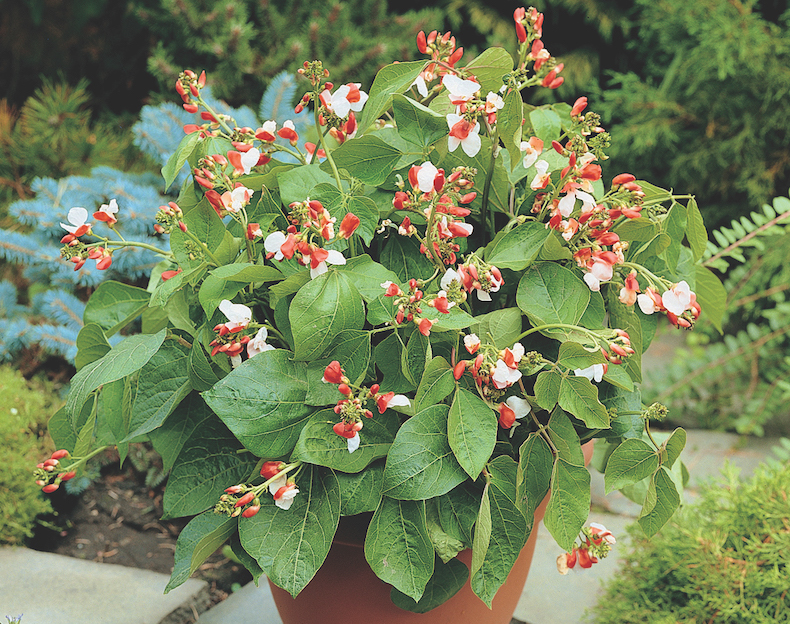
For small gardens, there's even dwarf runner bean varieties that can be grown in containers
Image: Runner Bean 'Hestia' (Dwarf) from Thompson & Morgan
Sow runner beans directly into the ground from May to July. Sow them at a depth of 5cm (2") at 30cm (12") intervals in rows 45cm (18") apart. If space is limited, try growing your runner beans in containers or against a wigwam structure made from canes; this also makes an eye-catching feature for your flower borders.
It's a good idea to sow a few extra seeds at the end of each row, so you’ll have spare plants to fill any gaps where seeds fail to germinate. If these plants aren't needed you can always give them to your friends.
How to support runner beans
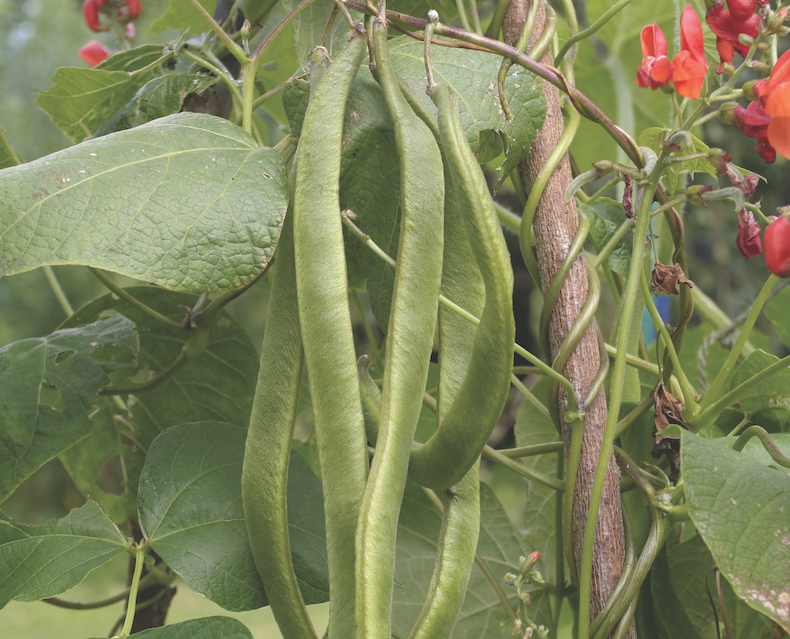
Runner beans' stems naturally twine around their supporting structure as they grow
Image: Runner Bean 'Lady Di' from Thompson & Morgan
The most commonly used runner bean support is a cane A-frame which spans two adjacent rows of beans. Insert a tall garden cane next to each seedling and, using garden twine, tie the top of each cane to the one opposite to create a tunnel. A supporting cane secured along the top of the framework helps to hold the structure rigid. The beans will naturally twine their stems around the canes as they grow.
When growing runner beans in containers, a wigwam framework is preferable. This is simply three or four garden canes, pushed into the soil around the edge of the pot and tied together at the top. If you’re growing runner beans against walls and fences, try using a piece of plastic horticultural mesh which creates a perfectly adequate support for the plants to scale.
How to feed and care for runner beans
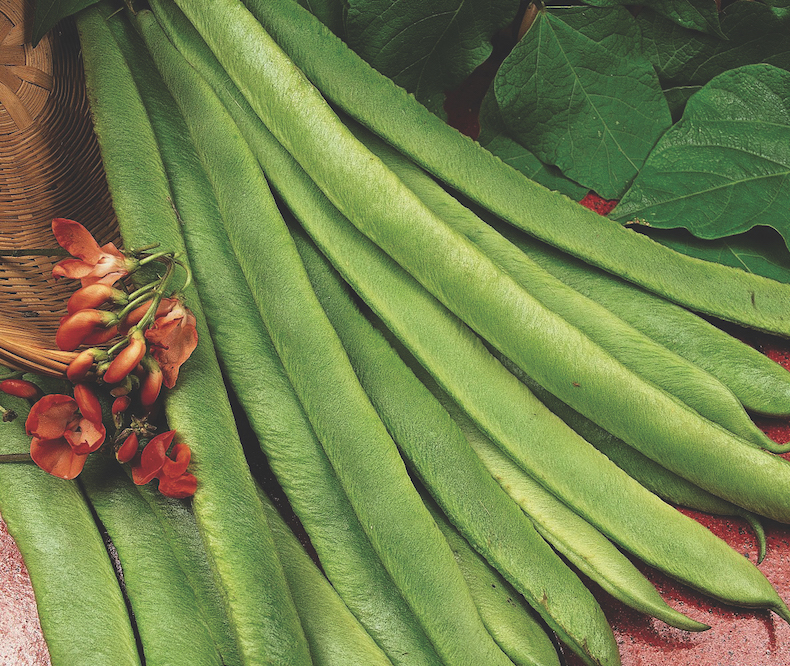
To get a good crop of beans, make sure you water and feed your runners regularly
Image: Runner Bean 'Scarlet Emperor' from Thompson & Morgan
Throughout the growing season you’ll need to water your beans regularly, particularly as they start to develop flowers. A lack of moisture is one of the main reasons why runner bean flowers can fail to set pods. A liquid feed applied every 14 days will also help to maximise your crop.
Pinch out the growing tips of the plants once the stems reach the top of their canes. This diverts their energy into producing beans rather than growing tall.
When to harvest runner beans
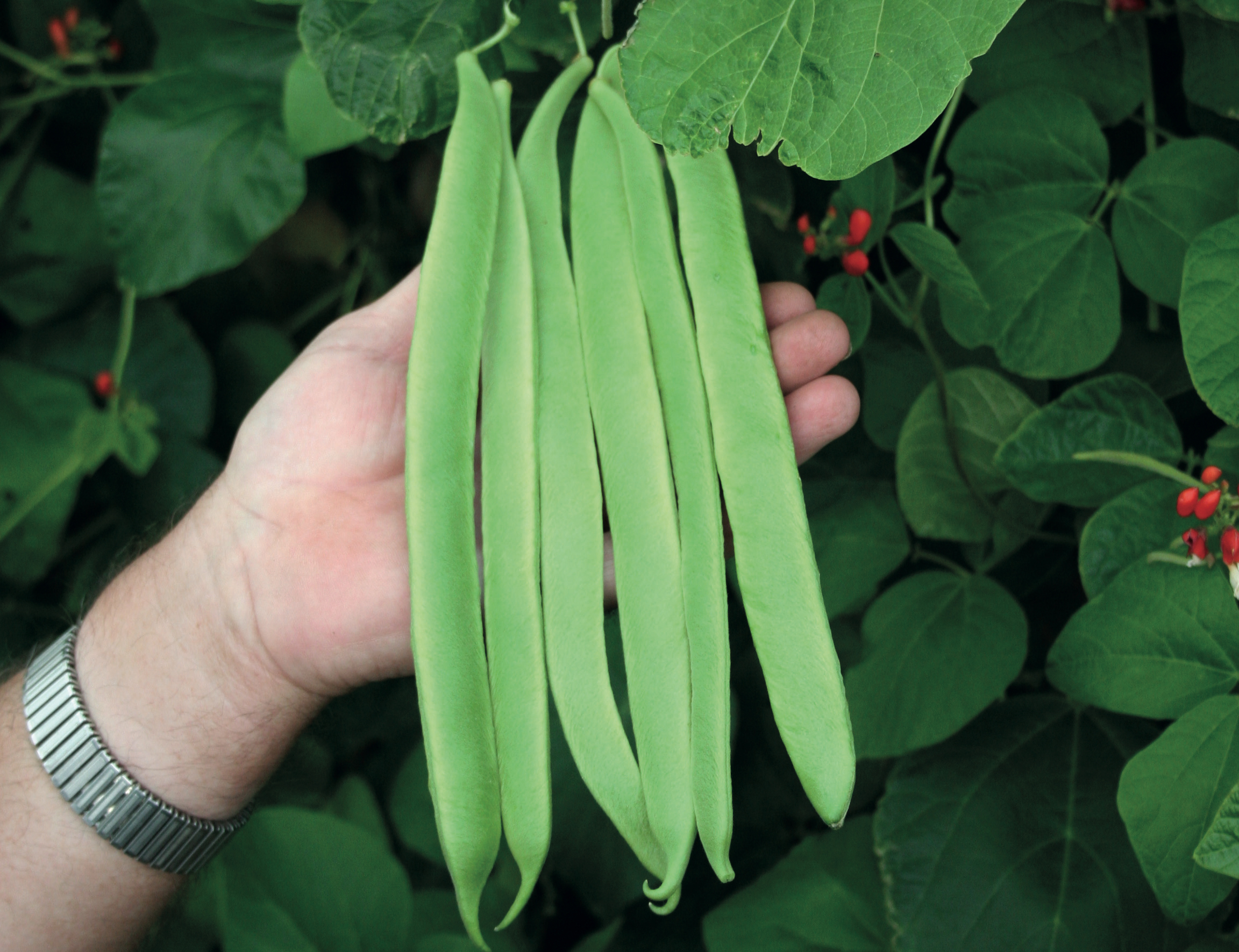
Harvest your runner beans once the pods reach around 20cm long
Image: Runner Bean 'St George' from Thompson & Morgan
Runner beans are usually ready to harvest in July, when the pods reach about 20cm (8") long. Avoid leaving the beans on the plant for too long or they’ll turn stringy. Ideally, you should pick beans every day or two to ensure optimum tenderness and remember, the more you pick, the more pods your plants will produce. Don't worry if you end up with a glut of runner beans, simply freeze them down to enjoy later in the year.
Why do my runner beans fail to set pods?
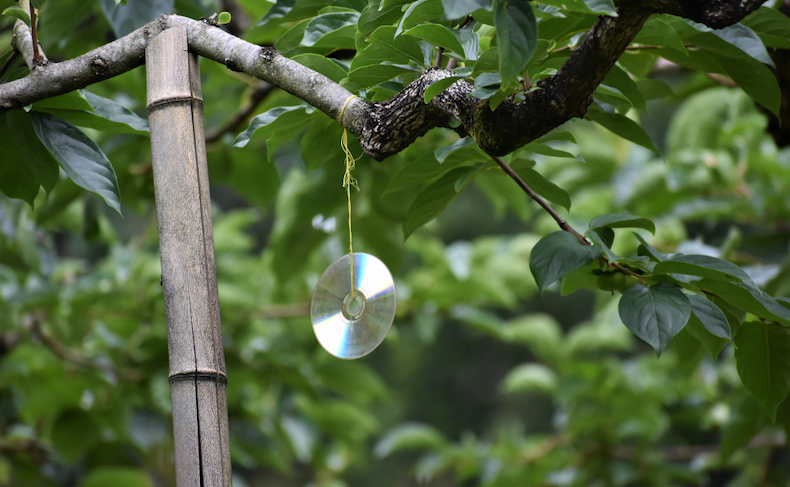
Use CDs as a homemade bird scarer to protect your crops
Image: Christopher Kissling/Shutterstock
Runner beans grow particularly well in the UK and serious problems are rare. Nonetheless, gardeners do sometimes find that their plants fail to set pods, particularly early on in the season. Here are some of the most common reasons that this might happen:
- The temperature is very high and there’s insufficient moisture at the roots during the critical watering period (when flowers and pods appear). Regular watering and mulching with organic matter helps to alleviate this problem.
- When night temperatures are particularly high, this can negatively affect the production of pollen, causing a reduction in the number of pods that are set. As temperatures cool, this problem normally resolves itself.
- Acid soils and very poor soils may also reduce crop production so it’s well worth taking the time to prepare the soil properly before planting runner beans.
- In very cold and wet summers there’s sometimes a lack of pollinating insects. This usually improves with a change in weather conditions.
- Birds can sometimes peck at flowers and damage them. If this is an issue, try hanging bird scarers made from tin foil or old CDs among your canes.
- Do keep picking your runner beans, even if you have too many and your freezer is full of them! Irregular picking slows the production of new pods.
Watch our 'How to grow runner beans video' for a full run-down
Best varieties of runner bean
There are plenty of different runner beans to choose from and there’s something to suit almost every need. Take a look at the table below to find some of our favourite runner bean varieties for sale online.
| Variety | Key Characteristic | Perfect for... |
|---|---|---|
| Runner Bean 'Hestia' | Dwarf variety | patio containers and small gardens. |
| Runner Bean 'Benchmaster' | Good exhibition bean | winning first prize on the showbench. |
| Runner Bean 'Scarlet Emperor' | Superb flavour | a well known, old fashioned variety with plenty of flavour. |
| Runner Bean 'Firestorm' and Runner Bean 'Snowstorm' | Predominantly self setting | an earlier and continual crop even during poor weather. |
| Runner Bean 'Tenderstar' and Runner Bean 'St. George' | Pink flowers/ Bicolour flowers | attractive and productive border plants |
To learn how to grow other varieties of pea and bean seeds, head to our hub page where you'll find our best runner bean growing guides and tips.
Sign Up For Exclusive Special Offers




© 2024 Thompson & Morgan. All rights reserved. A division of Branded Garden Products Limited.
Sign up for exclusive offers!



